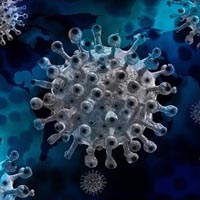Sex difference in hospitalized patients with COVID-19 infection

Accepted: 29 September 2021
All claims expressed in this article are solely those of the authors and do not necessarily represent those of their affiliated organizations, or those of the publisher, the editors and the reviewers. Any product that may be evaluated in this article or claim that may be made by its manufacturer is not guaranteed or endorsed by the publisher.
Authors
The pandemic of COVID-19 infection is rapidly progressing to one of the most severe threats to human health. The different responses of the immune system in females and males to a range of infectious and inflammatory stimuli were investigated. We aimed to explore the association of sex with the course of infection among the hospitalized COVID-19 patients. This Comparative cross-sectional study was conducted on RT- PCR positive COVID-19 patients. Severe and critical patients who required hospital or ICU admission were included in the study. The total number of patients was 150 (75 males and 75 females) with mean age of 57Y±14.7. There was a statistical significance in age between both groups [mean ± SD: males 60.5 (12.2), females 54 (15.3) (p=0:0.007)]. The prevalence of diabetes mellitus, hypertension, chronic kidney disease and ischemic heart disease was higher among males but without statistical significance. Consolidation was significantly more prevalent in female group (85.3% vs 61.3% in male group). The need of mechanical ventilation was higher in men, but with no statistical significance (44% Vs 32%, p=0.302). Also, mortality rate was higher (48%) in males than in females (37.3%), but with no statistical significance (p=0.262). During the COVID-19 infection, the risk factors of severe disease and progression to the need of mechanical ventilation support in addition to mortality rate are more prevalent among males. However, radiological patterns apart from consolidation, distribution of radiological abnormalities and CT severity score in both groups did not show significant sex difference.
How to Cite

This work is licensed under a Creative Commons Attribution-NonCommercial 4.0 International License.
PAGEPress has chosen to apply the Creative Commons Attribution NonCommercial 4.0 International License (CC BY-NC 4.0) to all manuscripts to be published.

 https://doi.org/10.4081/cdr.10.9842
https://doi.org/10.4081/cdr.10.9842






